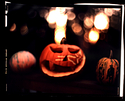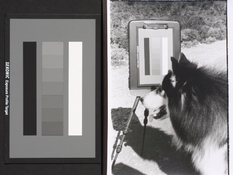Thanks Craig. The example you gave is a fairly "extreme" light situation which in effect you are trying rectify but in normal light conditions or controlled light conditions as the OP had what if any are the detrimental effects of a grossly over exposed negative such as I assume the OP's to be at the kind of overexposure he mentions. He states his dynamic range increased and this sounds a good thing but assuming this was the case then what if any are the "downsides" in terms of making a good print
Even for the situation you describe in which over development is needed +170% still seems a lot but what I wanted to know from the OP was what his negative looked like in normal light conditions and overdeveloped by +170% he found his dynamic range had increased quite markedly but I just wondered whether his print from such a negative looked in any way normal and was easy to print?
If it was and was indistinguishable from one printed at Ilford recommended time except for its markedly increased dynamic range then that a recommendation/ endorsement for using at least twice the recommended Ilford time for all of us and ignoring recommended times , isn't it?
Maybe Augustus Caesar will say the same as you in terms of his clarification but I don't yet know as he hasn't yet responded
pentaxuser
Hello guys,
unfortunately I did not try print from 0% and 170% negatives.
I was investigating do I expose negatives correctly.
I thought when I correctly expose and develop the negative, I should get 10 stops of density on the negative.
But that was wrong assumption.
Film manufacturer provides development times with printing on paper as ultimate goal.
What is happening during development, that subject brightness/luminance, let's assume 10stops is being compressed into 5-6 stops of density on negative.
My understanding is that is done intentionally, to then fit this 5-6 stops of film densities into 6-7 at most stops of paper exposure that paper is able to accept.
After paper is developed, it will render only 10^2 ~ 6-7 stops of densities.
So, original 10stops scene, will be compressed into 6.5 stops at best on paper.
If our goal is not to print o paper, but only to scan the negatives.
Then, I think, a different times should be used.
What development time shall be used?
The one that provides contrast close to 1.
from this graph, to get maximum density range on the neagive = 10 stops,
time shall be around 16 minutes, instead of recommended 8 minutes.
Because recommended time is good for printing on paper, but not for scanning.






